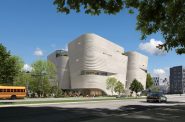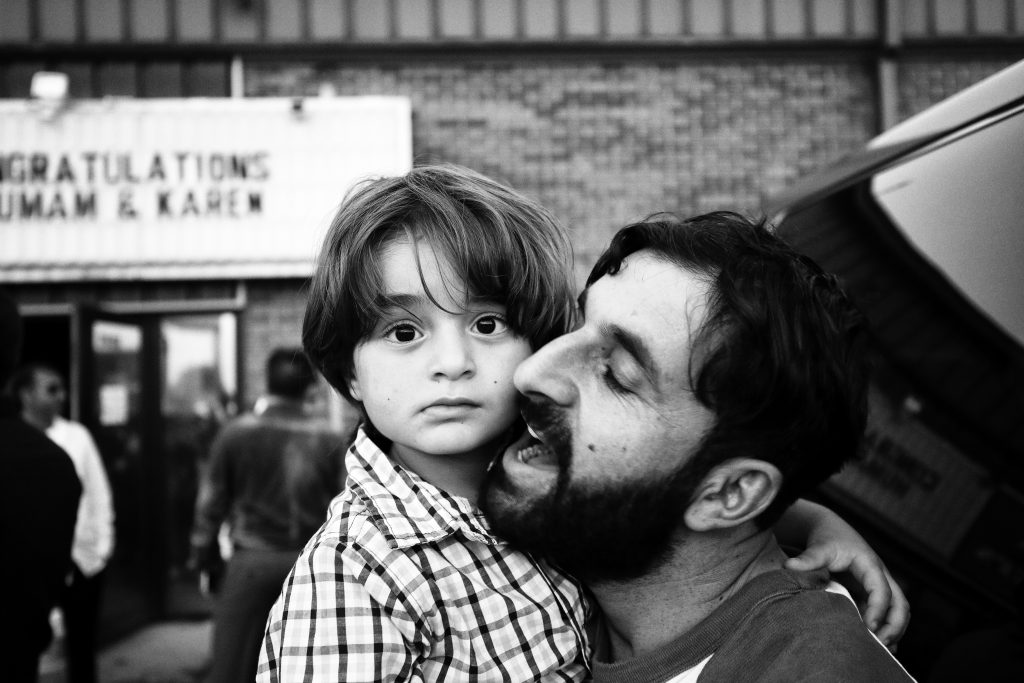After The Election Is Over
Shows about immigrants, horses and local art history might help you see beyond our divisions.
It was a election that seemed like it might never end. Tensions in our swing state rose, calling our relationships and alliances into question, turning even mundane moments of life into potential battlegrounds that don’t fully let up once the voting ends. We are perhaps more careful with our words and actions, less willing to venture outside our comfort zones lest we wander into the fray. This month, Milwaukee’s art exhibitions offer a chance to see ourselves and our history in larger contexts, which can bring some peace of mind for the many who feel a divided country prevents a deeper connection to one another. This is especially true at the Museum of Wisconsin Art, where Asher Imtiaz’s photographs present an opportunity to think about our shared humanity on a level deeper than political rhetoric can reach.
Museum of Wisconsin Art
Asher Imtiaz: Mirrors, Not Windows
Through November 24th
Wednesday – Sunday 9:30 a.m. to 4 p.m.
205 Veterans Ave., West Bend
Asher Imtiaz migrated to the United States in 2012 and has branded himself as a photographer who captures the lives and struggles other immigrants face in this country. In these divisive times, when the specter of immigration is used to evoke violence, inequality, and social ills, Imtiaz crafts thoughtful portraits that ask the viewer to consider the difficult path asylum seekers, refugees, and displaced persons face on American soil. These are mostly portraits of individuals and families. It’s hard to know what Imtiaz’s subjects are doing or thinking in the photographs. It can be easy to think of the immigrant experience as composed of many movements, all harrowing and restless (unless you believe the claim that immigrants come to America to sit in the lap of luxury, in which case, this exhibition might help you look a little deeper). As the title proclaims, these portraits are mirrors that reflect back onto the viewer facets of the human experience that can be said to belong to the universal—not windows into other worlds of which we claim no recognition.
Kim Storage Gallery
Maggie Robertson: Out of the Blue: The Blue Horse Paintings 2019-2024
Through November 16th
Tuesday – Friday, 11 a.m. to 5 p.m., Saturday 11 a.m. to 4 p.m.
207 E. Buffalo St., Suite 404
In a famous series of eleven lithographs, Picasso attempted to render a bull down to its most essential shapes and lines. He managed to lay out a sort of Cubist roadmap that abstracted and stylized the figure without sacrificing recognition—a technique that practicing artists still apply to their work today. This exercise came to mind when viewing Maggie Robertson’s blue horse paintings, which capture the animal in active gestures using an ultramarine background and a single unbroken outline to describe the horse. Although these paintings, prints, and drawings are considered complete (that is, not sketches) there is an exploratory quality to their contours that suggests a study. But do we need more studies? The animals remain classic subjects throughout art history. As I was studying art history, we liked to joke about the “man on a horse,” a shorthand phrase used to question the worth of so many works of art depicting colonizers, conquerors, and egomaniacs. Paintings in Robertson’s series buck (sorry) this tradition by gilding the outlines and leaving the body the color of the space the figure stands within. They appear as glowing silhouettes, fixed in the boundaries of the canvas, yet kinetic. There is fury and euphoria in the equine poses, and more in the tempura paintings of disembodied hooves in motion. Without that conquering rider context, these paintings lend ethereal autonomy to our dear old friends.
Haggerty Museum of Art
The Big 4-0: New Views of the Collection
Through December 21st
Monday – Saturday 10 a.m. to 4:30 p.m.
1234 W. Tory Hill
Even the familiar can be made new again through the illumination of new details, and anniversaries are perfect opportunities for reflection—a chance to retrace history and determine a way forward befitting the overarching mission. The Haggerty Museum of art functions as a teaching museum for Marquette University, which means nearly everything the museum owns benefits from bright minds revisiting and rediscovering works of art and then making that information available to other scholars. As the museum celebrates its 40th anniversary, many works on display are accompanied by texts that describe updated knowledge gained from ongoing research and conservation efforts. A thematic grab bag spans materials and movements, and includes photography, mail art, optical and kinetic art, political satire, and more. Revisit Mark Bradford’s crackling collages, María Magdalena Campos-Pons’s surreal portraits, Keith Haring’s instantly recognizable pop art, and Richard Serra’s mercurial studies that informed his monolithic sculptures.
Milwaukee Institute of Art and Design, Frederick Layton Gallery
Of Our Time
Through November 21st
Monday – Saturday, 10 a.m. to 5 p.m.
273 E. Erie St.
A decade older than the Haggerty, MIAD celebrates its 50th anniversary with an exhibition from the alumni community, and traces creative through lines all the way up to current students. Work from the archives illuminates the ways in which the institution—the only one of its kind in Wisconsin—has shaped and supported artistic innovation for half a century.
UWM Union Cinema
Experimental Tuesdays: Short Films by Ayanna Dozier
November 12th, 7:00 p.m. to 9:00 p.m.
UWM Union Cinema
2200 E. Kenwood Blvd.
Ayanna Dozier will attend this showing of her short films, which have been screened at art galleries and film festivals around the world. The artist uses experimental film, photography, printmaking, and research to examine transactional intimacy and private relations in public and social politics. Dozier is known for using her materials to reflect back onto society its broken understanding of sex, womanhood, and the price one pays for bodily autonomy. This event is free and open to the public.
Take a chance on exploring perspectives this month. Division is a lazy response to difference, but art pushes us to critique the systems that benefit from our disunity. History is a bridge we all cross at once, connecting the past, present, and future to our own unfolding outlooks.
Annie Raab has been writing about art since 2014 for print and online publications. You can find more of her critical and creative writing at www.annieraab.com. She lives in Milwaukee.
If you think stories like this are important, become a member of Urban Milwaukee and help support real, independent journalism. Plus you get some cool added benefits.
Art
-
It’s Not Just About the Holidays
 Dec 3rd, 2024 by Annie Raab
Dec 3rd, 2024 by Annie Raab
-
The Spirit of Milwaukee
 Aug 30th, 2024 by Annie Raab
Aug 30th, 2024 by Annie Raab
-
Indigenous Artist Creating Art Installation For New Public Museum
 Aug 1st, 2024 by Graham Kilmer
Aug 1st, 2024 by Graham Kilmer


















